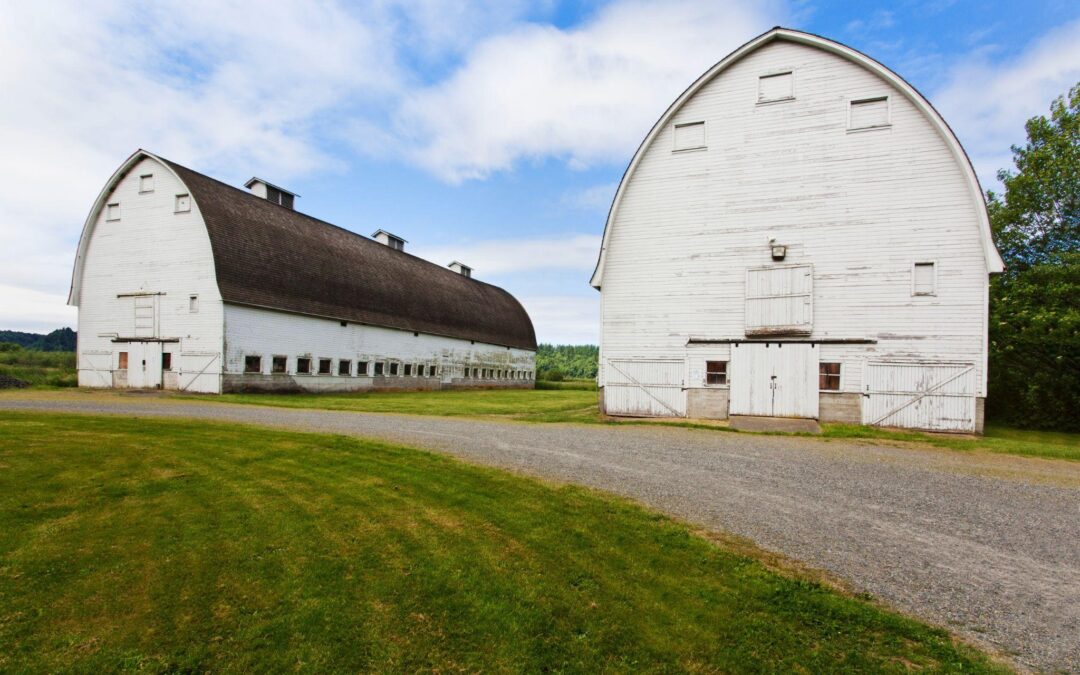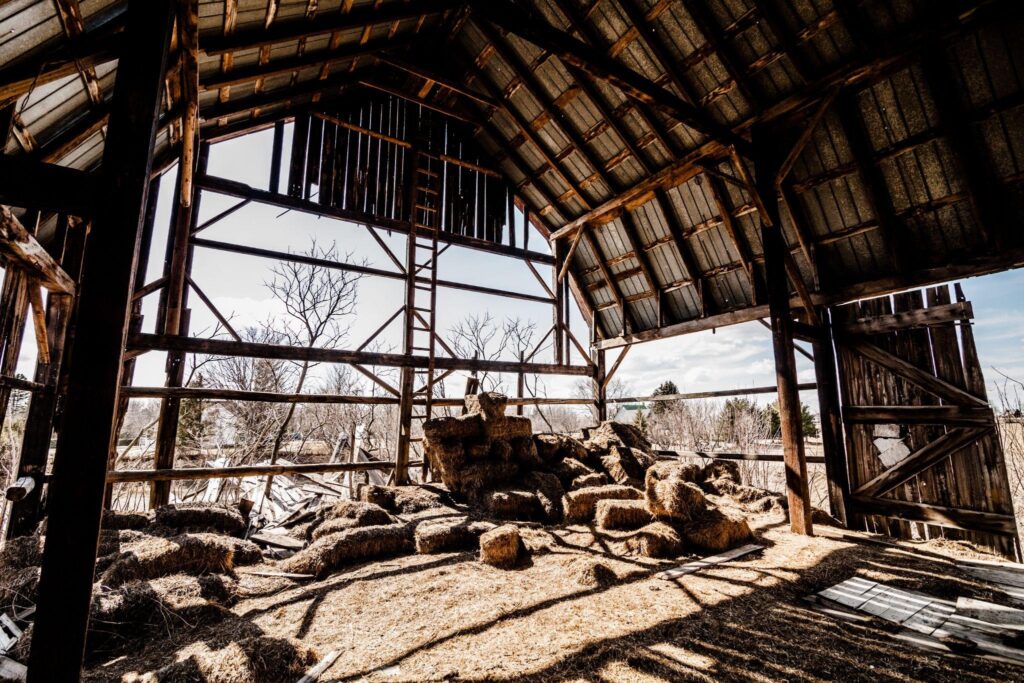Did you know that New York is home to some of the most unique barns in the country, including the Parker 13-Sided Barn, built in 1896, and the Kelly Round Barn, constructed in 1899? These architectural marvels showcase the ingenuity of past builders—but many barns across the state aren’t as lucky.
Harsh winters, heavy rains, and years of wear take a toll, weakening beams, shifting foundations, and causing roof leaks that threaten the entire structure. What starts as a small crack or a minor leak can quickly escalate into major damage, requiring costly repairs.
The good news? With the right restoration techniques, you can preserve and strengthen your barn before it’s too late. In this guide, we’ll cover key warning signs, proven restoration methods, and expert insights to help you protect your barn for generations to come.
If your barn is showing signs of wear, now is the time to act. Let’s dive in.
The Real Threats to Your Barn’s Longevity
Many barn owners assume their buildings will last forever, only to be caught off guard by sudden deterioration. Understanding what weakens your barn is the first step toward protecting it before the damage becomes irreversible.
New York’s Harsh Weather is Working Against You
Between heavy snowfall, strong winds, and freeze-thaw cycles, New York’s climate is one of the biggest threats to barn structures. Snow buildup on the roof adds significant weight, while temperature fluctuations cause wood and masonry to expand and contract, weakening the foundation over time.
Without proper maintenance, these weather-related stresses accelerate wear and tear.
Roof Damage Starts Small—Then Spreads Everywhere
A small leak may not seem like a big deal at first, but over time, water damage compromises your barn’s entire structure. Moisture seeps into wooden beams, causing rot and inviting mold. It also weakens roof panels and insulation, making repairs even more costly.
If left unchecked, a damaged roof can eventually collapse under pressure. (Barn roof repair New York is one of the most critical steps in barn preservation.)
Foundation Problems Are Silent but Destructive
Barn foundations often go overlooked until major issues arise. Cracking, shifting, or sinking foundations lead to uneven floors, leaning walls, and structural instability.
These problems often result from soil movement, drainage issues, or decades of gradual wear. Addressing foundation concerns early prevents costly full-scale reconstruction later.
Insects, Pests, and Rot Weaken the Frame
Wooden barns are especially vulnerable to termites, carpenter ants, and moisture-induced rot. Once pests or decay take hold, they weaken the support beams that hold your barn together. By the time the damage is visible, structural integrity is already compromised.
Poor Drainage is a Recipe for Disaster
If water pools around your barn after a heavy rain, it’s a warning sign. Poor drainage leads to foundation weakening, wood rot, and mold growth inside the structure. A well-maintained drainage system is one of the simplest ways to extend your barn’s lifespan.
Proven Barn Restoration Techniques That Work
Restoring a barn isn’t just about making it look good—it’s about reinforcing its structure, extending its lifespan, and preserving its historical value. Whether you’re dealing with foundation issues, a failing roof, or weakened support beams, the right techniques can make all the difference.
Here are specific, field-tested restoration methods that ensure your barn stands strong for decades.
1. Foundation Reinforcement & Leveling
A failing foundation can cause walls to lean, floors to sag, and entire sections of the barn to shift. The best techniques for stabilizing a foundation include:
- Helical Piers: Installed deep into stable soil to prevent further sinking or shifting.
- Shotcrete Application: A high-strength concrete mix sprayed onto weakened foundation areas to reinforce structural integrity.
- Wall Pushing Systems: Used to realign and stabilize bowing walls, ensuring long-term durability.
2. Roof Repair & Replacement (Barn Roof Repair New York)
A failing roof is one of the biggest threats to any barn. The right repair techniques depend on the level of damage:
- Metal Roof Replacement: Long-lasting and weather-resistant, metal roofing is a superior option to traditional wood or asphalt.
- Structural Reinforcement: If roof trusses or rafters are weak, sistering beams (adding extra wood alongside the existing beams) can strengthen them.
- Flashing & Sealant Upgrades: Prevents water intrusion at joints, protecting against leaks and rot.
3. Timber Frame & Structural Repairs
A barn’s frame is its backbone, and if key beams are compromised, immediate action is needed:
- Beam Splicing & Replacement: When only part of a beam is damaged, the affected section is removed and replaced with new wood, preserving the original structure.
- Epoxy Wood Consolidation: Injecting epoxy into weakened wood hardens and strengthens it without full replacement.
- Steel Bracing: Used in cases where additional reinforcement is needed for long-term stability.
4. Exterior Protection & Weatherproofing
New York’s climate is rough on barns, but these techniques help combat moisture, wind, and temperature fluctuations:
- Proper Drainage Systems: French drains or grading adjustments prevent water from pooling around the foundation.
- Siding Restoration: Installing weather-resistant barn siding protects against wind, rain, and pests.
- Protective Coatings & Sealants: Extends wood longevity by preventing moisture absorption and UV damage.
5. Historical Preservation Techniques
For older barns, restoration requires a balance of tradition and innovation:
- Reclaimed Wood Matching: Using period-appropriate materials to maintain historical integrity.
- Mortise and Tenon Joinery Restoration: A classic, time-tested technique for authentic barn reconstruction.
- Lime-Based Mortar for Stone Foundations: Ensures flexibility while maintaining strength in older stone structures.
Planning Your Barn Restoration Project: Where to Start
Restoring a barn is a major investment, and without proper planning, small oversights can lead to costly mistakes. Whether you’re dealing with an aging foundation, roof leaks, or structural instability, following a strategic approach ensures your barn remains safe, functional, and historically preserved.
Step 1: Start with a Professional Inspection
Before any work begins, an expert evaluation is essential. Many structural issues—such as shifting foundations or hidden wood rot—aren’t always visible at first glance. A professional barn restoration specialist like Woodford Barn Repair can assess the condition of the barn and identify potential risks that may need urgent attention.
Step 2: Prioritize Structural Integrity First
Cosmetic improvements mean little if the barn’s framework isn’t stable. Key structural repairs should come first, including:
- Foundation Reinforcement: Addressing cracks, sinking areas, or shifting walls.
- Roof Restoration: Fixing leaks, replacing deteriorated panels, and reinforcing rafters.
- Frame Stabilization: Repairing or replacing compromised beams to strengthen the structure.
Step 3: Select Durable, Historically Accurate Materials
Choosing the right materials is crucial for long-term durability. Many older barns benefit from reclaimed wood or traditional joinery methods to maintain their original character while reinforcing their structural strength. High-quality roofing materials, such as metal or cedar, can provide longevity while complementing the barn’s aesthetic. Woodford Barn Repair specializes in balancing historical authenticity with modern reinforcement techniques to ensure durability.
Step 4: Implement Preventative Measures
Once the essential repairs are complete, adding protective features will help extend the life of the barn:
- Proper drainage systems to prevent water damage around the foundation.
- Weather-resistant siding to guard against moisture and high winds.
- Protective sealants to shield wood from rot, pests, and UV exposure.
Step 5: Work with Experienced Barn Restoration Professionals
Unlike conventional buildings, barns require specialized techniques to restore both function and historical authenticity. Woodford Barn Repair has years of experience working with aging barns in New York, helping owners strengthen and preserve their structures with expert craftsmanship and modern solutions.
A well-planned restoration not only enhances the barn’s structural integrity but also protects its legacy. By focusing on essential repairs, durable materials, and preventative care, barn owners can ensure their structures remain safe and operational for generations.
Protect Your Barn Before It’s Too Late
A barn isn’t just another structure—it’s part of your property’s history and a space that’s meant to last. But time, weather, and wear can take a toll, and waiting too long to address damage only makes restoration more expensive and complicated.
Taking action now—whether it’s reinforcing the foundation, fixing a worn-out roof, or strengthening the frame—can save you from costly repairs down the road. Woodford Barn Repair specializes in helping barn owners restore and protect their structures with expert craftsmanship and proven techniques.
Don’t wait until small issues turn into major problems. Start your barn restoration today.



